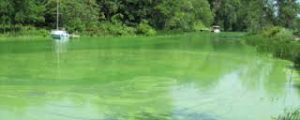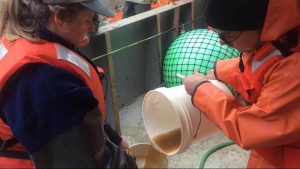Sitting in Port Washington, WI, overlooking the port which empties into a beautiful blue Lake Michigan, the suggestion of an appearance of algae blooms gains little interest. Lake Michigan is deep and cold. Port Washington provides an adequate sewage system, and the relatively small amount of nearby farms only contributes what appears to be a manageable level of damaging nutrients.
Not so with 1600-acre, 37-foot deep, Tainter Lake, north of college town Menomonee, WI.
In an outstanding report by the National Wildlife Foundation (NWF), Tainter’s plight is well-documented. And is held up as an example of what, increasingly, is becoming a not-so-unusual occurrence across not just the Great Lakes Regi

on and the area’s inland lakes, but throughout the USA.
The NWF identifies three issues that must be addressed, to better combat America’s algae bloom crisis:
1. No federal agency currently tracks lake closures or health warnings nationally.
2. Few economic studies have assessed the national cost of freshwater HABs.
3. Not all states monitor or report the presence of algae-related toxins in freshwaters.
ToxicAlgaeNews, a superb online publication provided by non-profit publisher Resource Media, has stepped up to help cover bloom outbreaks by-state.
So far, the improved research and tracking has not helped Tainter Lake. But with progress being made, perhaps the time will come.



